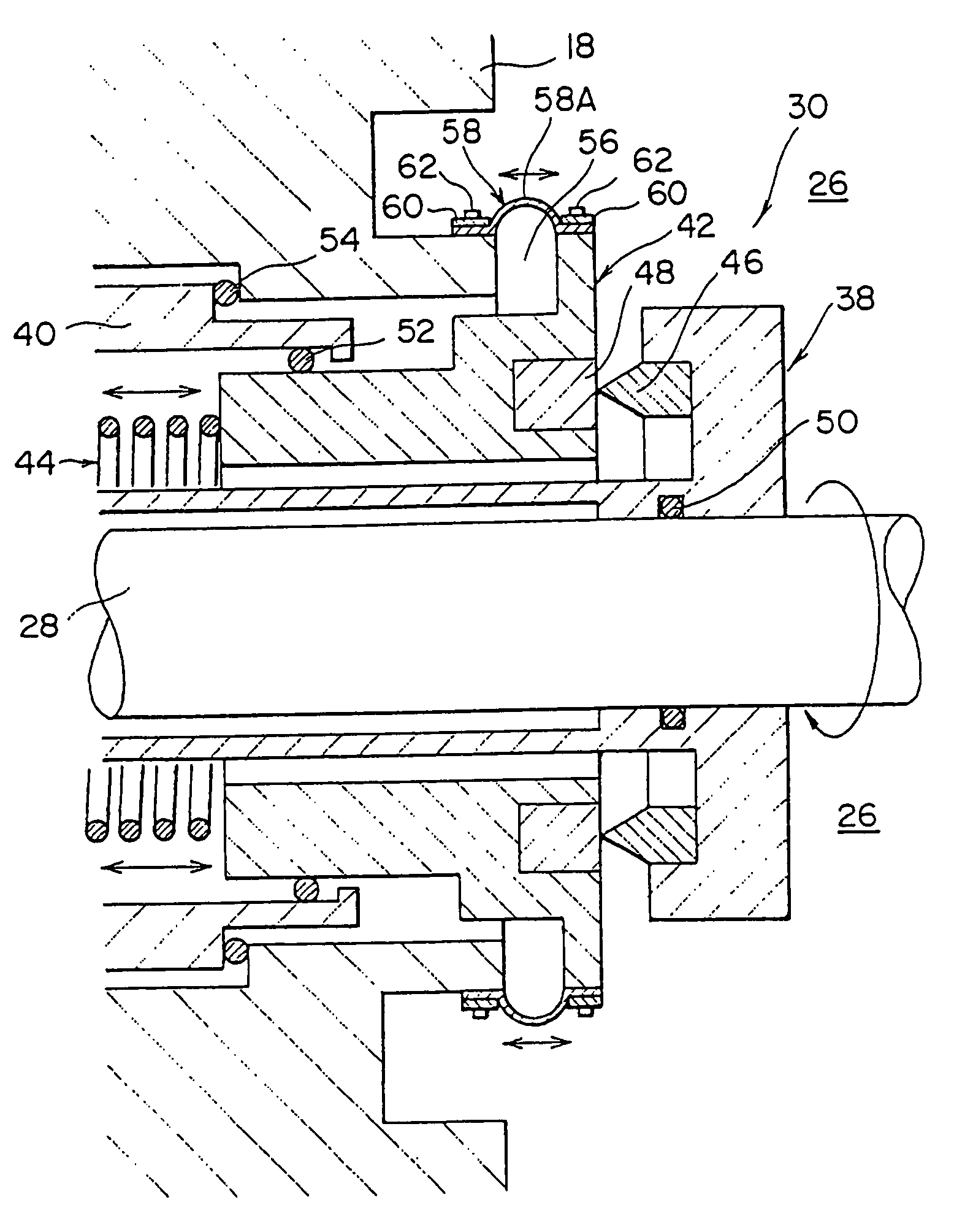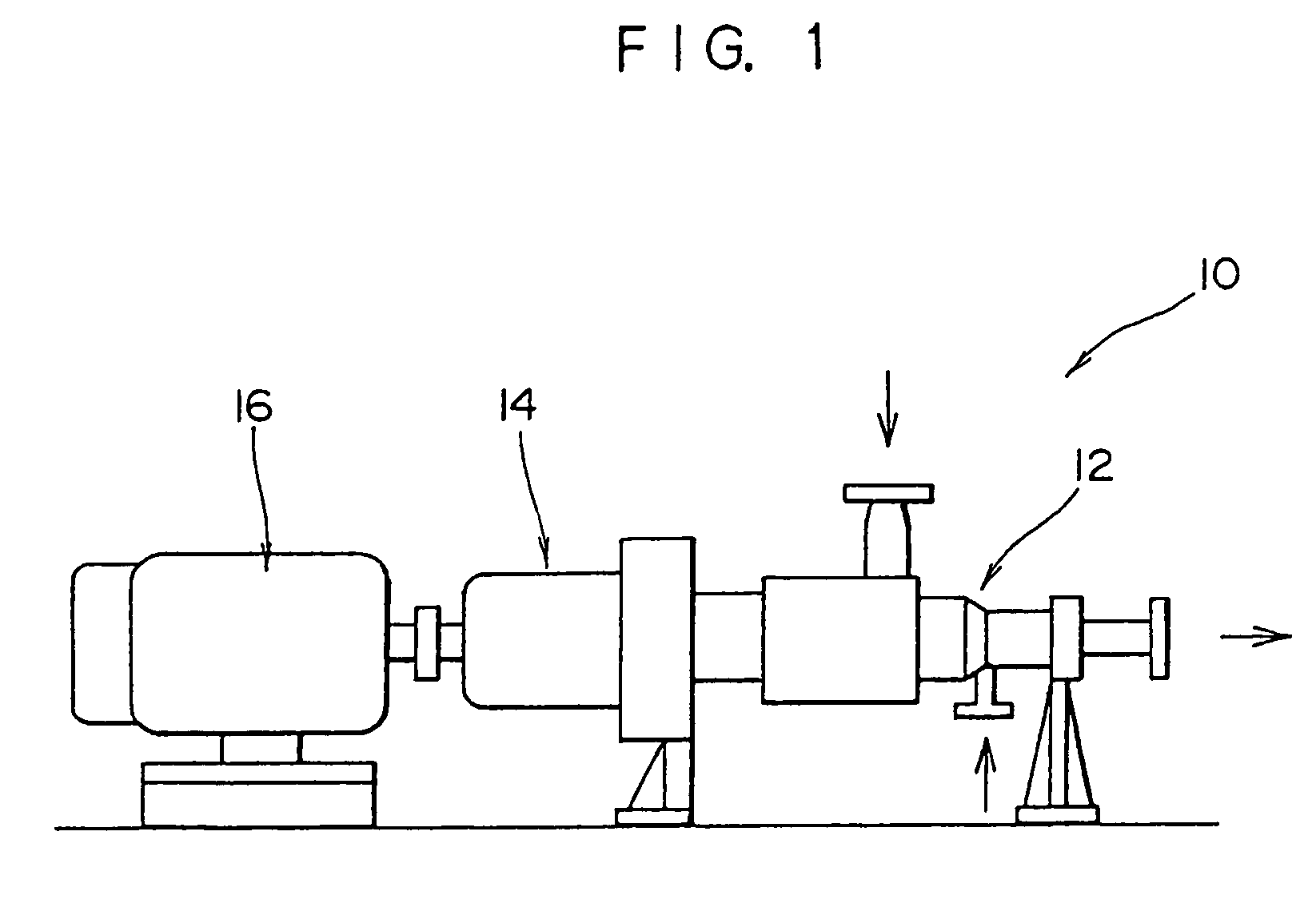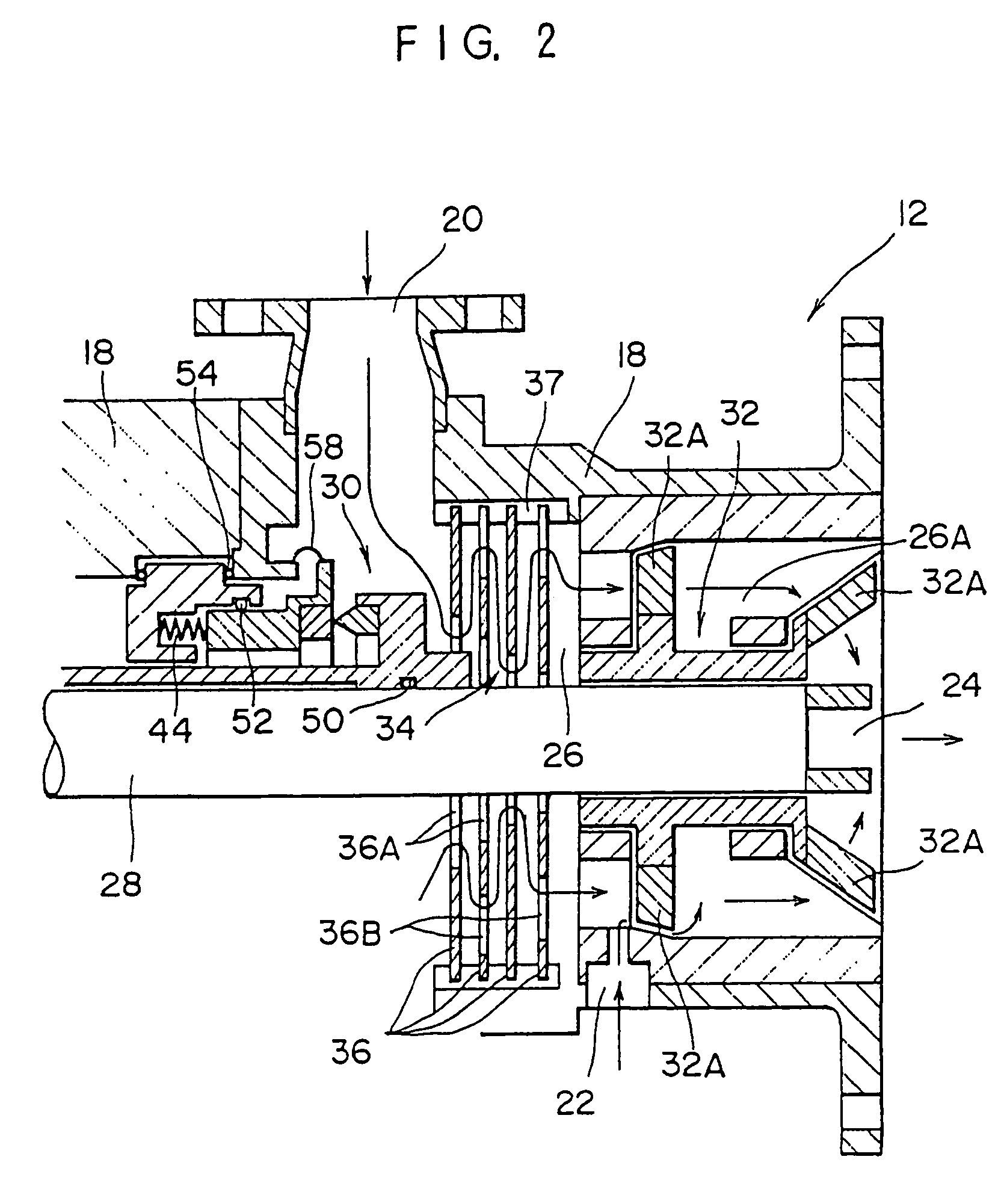In-line mixing apparatus, process for mixing reactive chemical solutions, and process for producing microcapsules
a technology of reactive chemical solutions and mixing equipment, which is applied in chemical/physical/physical-chemical processes, rotary stirring mixers, transportation and packaging, etc., can solve the problems of liquid leakage from and shaft sealing portion or mechanical seal function deterioration
- Summary
- Abstract
- Description
- Claims
- Application Information
AI Technical Summary
Benefits of technology
Problems solved by technology
Method used
Image
Examples
example 1
[0057]An oil phase solution having 10 parts by weight of crystal violet lactone, 1 part by weight of benzoyl leuco methylene blue and 4 parts by weight of 3-(4-(diethylamino)-2-methoxy phenyl)-3-(2-methyl-1-ethyl-3-indolyl)-4-azaphthalide dissolved in this ratio therein as color formers was stored in a first storage tank at 65° C. As a polyvalent isocyanate, a biuret product of hexamethylenediisocyanate (Sumitomo N3200, produced by Sumitomo Bayer Urethane Co., Ltd.) was stored in a second storage tank at 30° C. As a polyol, HYBLOCKS ODX-1316A, produced by Dainippon Ink and Chemicals, Inc., was stored in a third storage tank at 30° C.
[0058]The oil phase solution, the polyisocyanate and the polyol were continuously supplied to an in-line mixing apparatus according to the present invention by using metering pumps at 47 parts by weight, 3 parts by weight and 1 part by weight, respectively, per minute.
[0059]In the in-line mixing apparatus used in Example 1, an upstream injection inlet wi...
example 2
[0062]In an in-line mixing apparatus of Example 2, a reverse flow preventing mechanism constituted with weir plates was provided between the mechanical seal and the rotary blade of the in-line mixing apparatus of Example 1. The oil phase solution, the polyvalent isocyanate and the polyol, which were the same as those in Example 1, were continuously supplied to the in-line mixing apparatus thus constituted by using metering pumps in the same ratio as in Example 1.
[0063]Resultantly, no leakage of the liquid from the mechanical seal had occurred after continuously supplying the liquids for 1,800 hours. It is considered in Example 2 that because a flow of the oil phase liquid was formed from the upstream injection inlet to the discharge outlet in the mixing flow path, and the reverse flow preventing mechanism constituted with weir plates was provided between the mechanical seal and the rotary blade, a reverse flow toward the mechanical seal was even less likely to take place even when t...
example 3
[0064]In Example 3, the same chemical solutions as in Example 1 were continuously supplied to the same in-line mixing apparatus as in Example 1 in a ratio that was different from that in Example 1. The ratio of the chemical solutions was 50 parts by weight, 3 parts by weight and 1 part by weight of the oil phase solution, the polyvalent isocyanate and the polyol, respectively. Resultantly, leakage of the liquid from the mechanical seal occurred after supplying the liquids for 1,500 hours.
PUM
| Property | Measurement | Unit |
|---|---|---|
| thickness | aaaaa | aaaaa |
| thickness | aaaaa | aaaaa |
| area | aaaaa | aaaaa |
Abstract
Description
Claims
Application Information
 Login to View More
Login to View More - R&D
- Intellectual Property
- Life Sciences
- Materials
- Tech Scout
- Unparalleled Data Quality
- Higher Quality Content
- 60% Fewer Hallucinations
Browse by: Latest US Patents, China's latest patents, Technical Efficacy Thesaurus, Application Domain, Technology Topic, Popular Technical Reports.
© 2025 PatSnap. All rights reserved.Legal|Privacy policy|Modern Slavery Act Transparency Statement|Sitemap|About US| Contact US: help@patsnap.com



